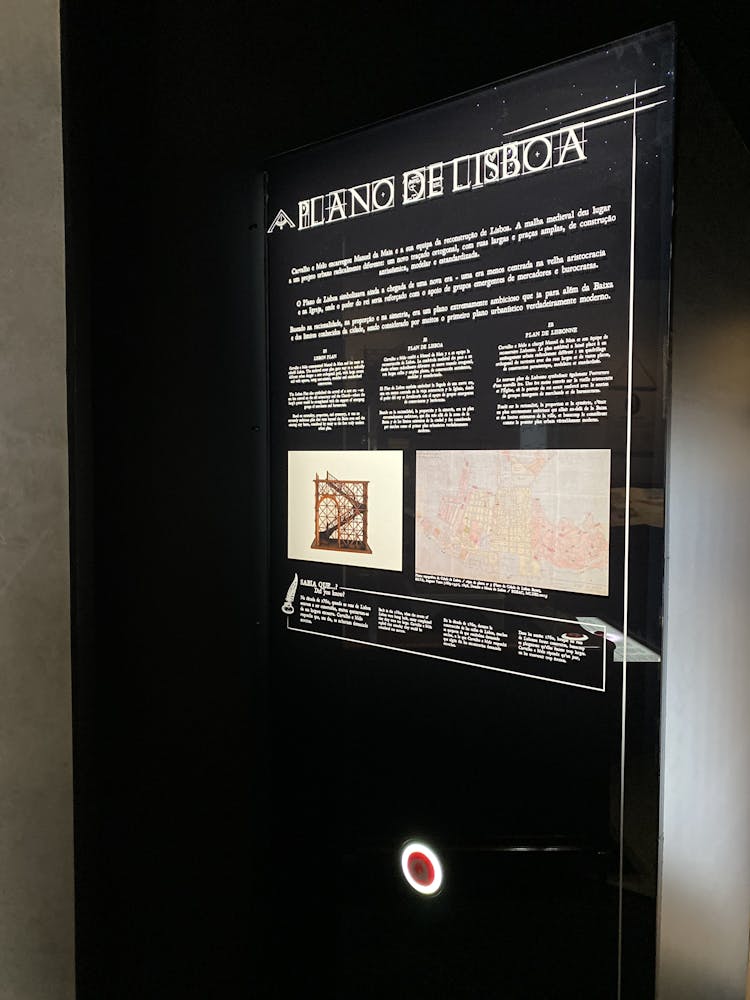Share
By 1756, accounts of the earthquake abounded in Lisbon, but given the abundance of printed memoirs, it became clear that much of the information was unreliable or contradicted each other. Not only in Portugal, but all over Europe, direct or indirect printed testimonies appeared, emanating from observers of the catastrophe as much as from already famous authors like Voltaire or young ones like Kant. There was, however, much less information about the effects of the earthquake on the rest of the kingdom.
On 26 January 1756, Sebastião José de Carvalho e Melo, later known as Marquês de Pombal, sent the bishops of the kingdom an inquiry, or Inquérito, with 13 questions. They were asked to copy this document and send it to all the priests under their command so that they, in turn, could question the inhabitants of their parish. The objective of the Inquérito was to understand the natural causes of the earthquake, assess the damage, and measure the magnitude of the disaster by collecting accurate data. Probably based on a similar survey launched on 8 November 1755 by the King of Spain, Carvalho e Melo's questionnaire was broader and more comprehensive, containing five more questions than the Spanish survey.
The survey questions reflected the doubts that still puzzle scientists today: At what time did the earthquake begin, and how long did it last? Were there differences in the intensity of the shaking? What was the geographical orientation? The possible existence of more critical physical signs was then raised, whether in the sea, at springs, or in rivers. Another question was about the tidal retreat and how significant the changes were. Had cracks appeared in the ground? Finally, it asked for information about the seismic history of each region.
The investigation also revealed clear concerns about the impact on human lives: How many houses had been damaged and how many victims had died? Were there any fires? How did the ecclesiastical, military, and political authorities behave? The survey also aimed to create statistics, as the questions asked were also to make a census of the total population by gender. Although the survey responses were handwritten, they appear to have played an essential role in shaping royal policy. This is not surprising, given the wealth of information on prices of goods, supplies, population numbers, and the diligence of local authorities. Personal impressions, sifted through the sieve of quantification, were then on the way to becoming a very effective political instrument.
The bishop of Coimbra had this 1756 survey printed to increase its effectiveness. Others circulated the handwritten versions, but the information revealed to the Secretary of State showed a land where many victims were in a state of shock, as in the case of Porto de Mós, which organized desperate processions; Cascais or Benavente, with processions and pilgrimages to churches and hermitages. In many places, in the absence of ministers or the military, people felt as if they had no choice but to turn to religion. Desperation and panic almost led to deaths in Nisa, a town in the east. While the shaking continued, prayers also continued without interruption.
Marquês de Pombal's Inquérito, as it is called today, is considered by many as the origin of modern seismology.
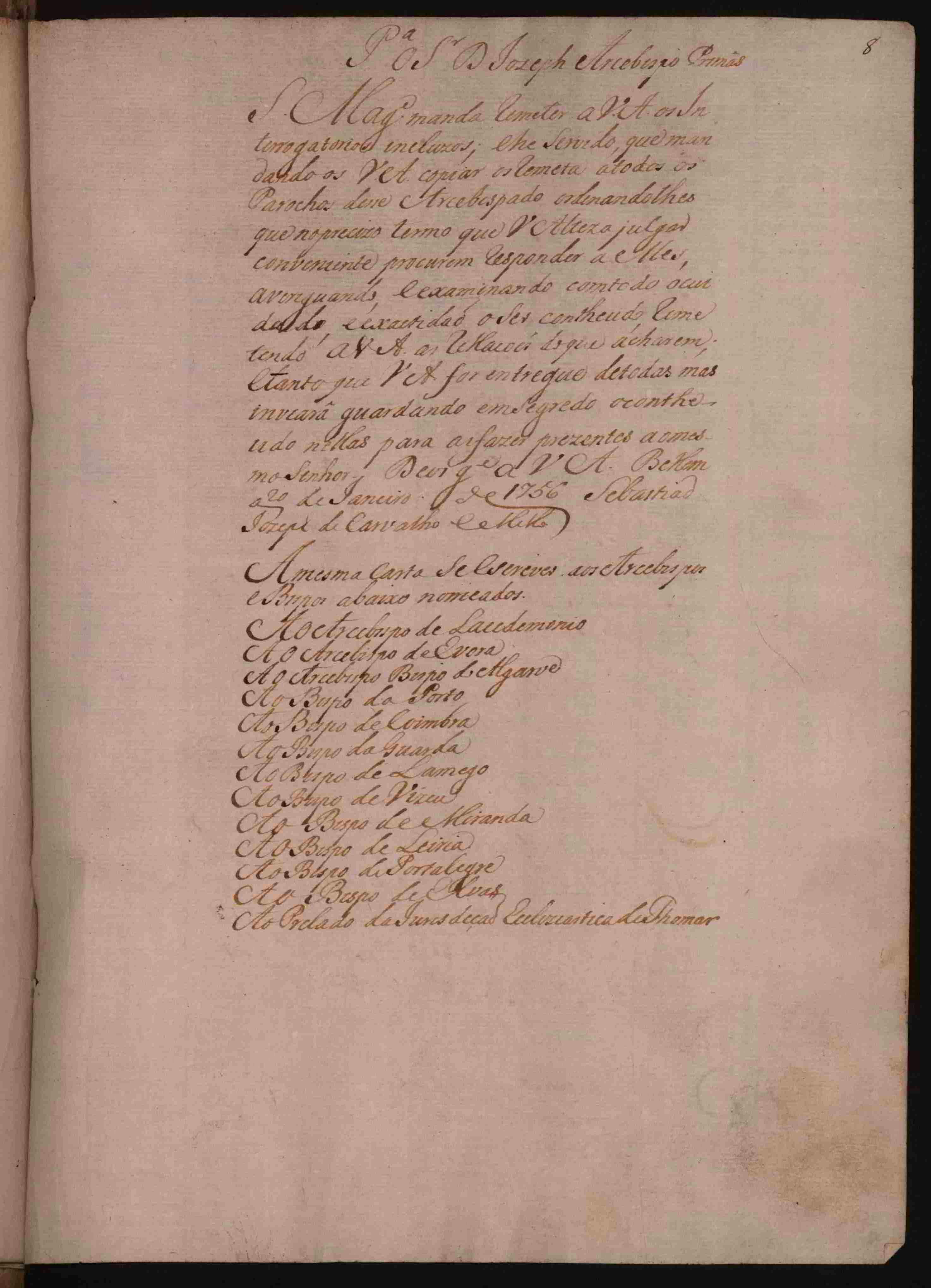
In a letter dated 20th January 1756, Sebastião José de Carvalho e Melo writes to the Cardinal - Patriarch of Lisbon, D. José Manuel da Câmara:
"For Mr. D. José, Archbishop Primate, Your Majesty orders the enclosed interrogatories to be sent to Your Majesty, and it is Your Majesty's service, having them copied, to send them to all the parish priests of the archbishopric, ordering them to answer the questions at the precise term that Your Highness deems convenient. Your Highness deems it fitting that they try to respond to them, ascertaining and examining their contents with all care and exactness, sending to Your Highness the relations and as much as Your Highness is delivered of all of them as you will send, keeping secret the contents in them to make them present to the same lord. May God bless Your Highness, Belém a 20 de Janeiro de 1756, Sebastião José de Carvalho e Melo. The same letter was written to the archbishops and bishops named below".*
He also informs you that a similar letter was sent to the following archbishops and bishops:
to the Archbishop of Lacedemonia **
to the Archbishop of Evora
to the Archbishop Bishop of Algarve ***
to the Bishop of Porto
to the Bishop of Coimbra
to the Bishop of Guarda
to the Bishop of Lamego
to the Bishop of Vizeu
to the Bishop of Miranda
to the Bishop of Leiria
to the Bishop of Portalegre
to the Bishop of Elvas
to the Prelade of the Ecclesiastic Jurisdiction of Tomar
NOTES:
(*) Source: IAN-TT. Ministério do Reino: Livro de Avisos 5, nº 3º, classe 1ª, 1756-1757, fls. 8, transcribed in José Augusto dos Santos ALVES, "O Marquês de Pombal e a mudança de paradigma", Cultura [Online], Vol. 22, 2006, p. 4.
(**) Former Roman Catholic Archdiocese of Mytilene - Greece.
(***) Archbishop of Goa and Primate of the East, Lourenço de Santa Maria e Melo, Franciscan, who for health reasons returned to Portugal and was appointed Archbishop of the Algarve in 1752.

The bishop of Coimbra, D. Frei Miguel da Anunciação, had the Inquiry printed in 1756, and sent it to all parishes in his bishopric, as did all the other bishops of the kingdom. A period of one month was given to parish priests to answer thirteen questions, "taking advantage of this time to confer on the doubtful points with intelligent and expert persons, who will communicate to Your Grace the light necessary for the correction".
These were the questions of the Inquiry:
1º. - At what time did the earthquake of the first of November begin and how long did it last?
2º. - Whether it was perceived that the impulse was greater from one part than from another? From the north to the south, or the contrary, and if it seems that more ruins fell in one part than in the other?
3º. - How many houses were ruined in each parish, if there were any notable buildings in it, and the state in which they remained.
4º. - What persons died, if some were distinguished?
5º. - What new things were seen in the sea, the springs and the rivers?
6º. - If the tide went out first, or filled up, how many times did it rise more than usual, how many times was the extraordinary ebb or flow perceived and if it was noticed, how long did it take for the water to go down and how long did it take to fill up again?
7º. - If the earth opened some holes, what was noticed in them, and if a spring broke out again?
8º. - What immediate steps were taken in each place by the clergy, the military and the ministers?
9º. - What earthquakes have been repeated after the first of November, at what time and what damage have they done?
10º. - If there is memory that at some time there was another Earthquake and what damage has it done in each place?
11º. - What number of people does each parish have, stating, if it can be, how many there are of each sex?
12º. - If there has been any lack of supplies?
13º. - If there was a fire, how long did it last, and what damage did it do?
Extra - If it suffered some ruin in the earthquake of 1755 and in what and if it is already repaired.
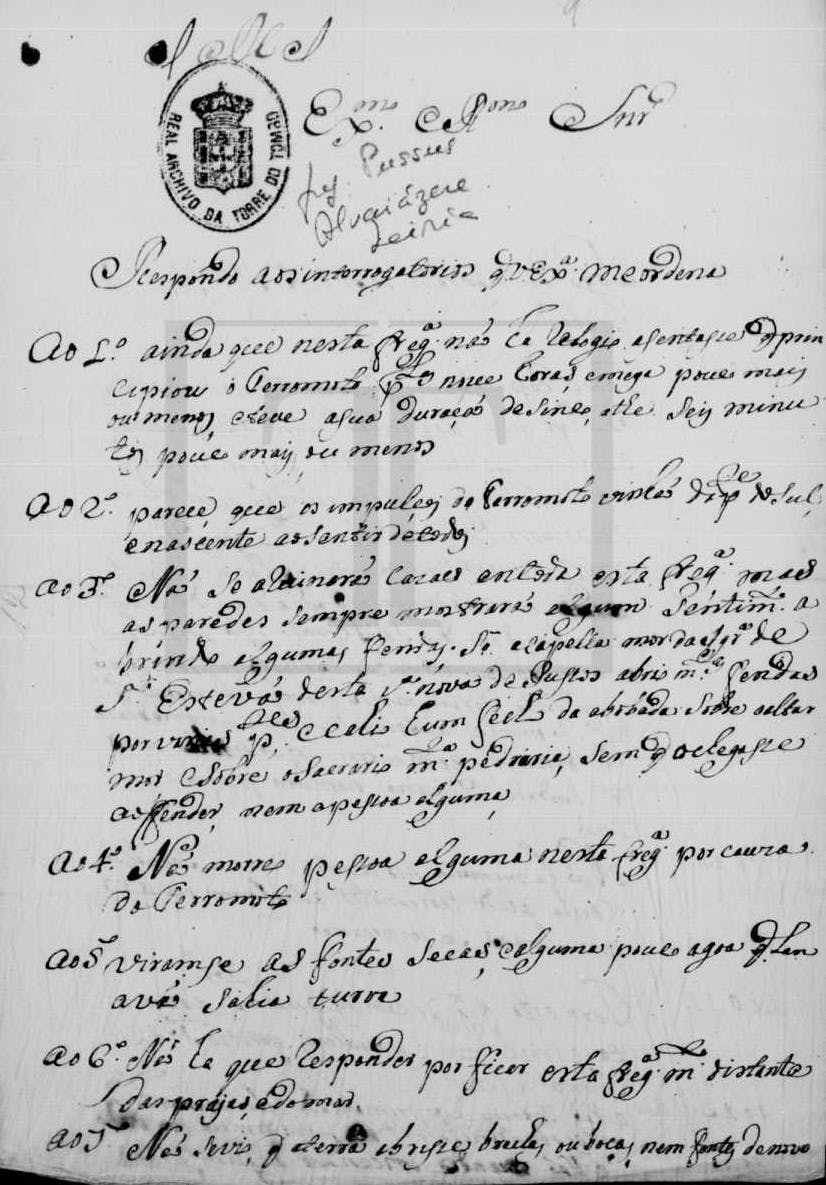
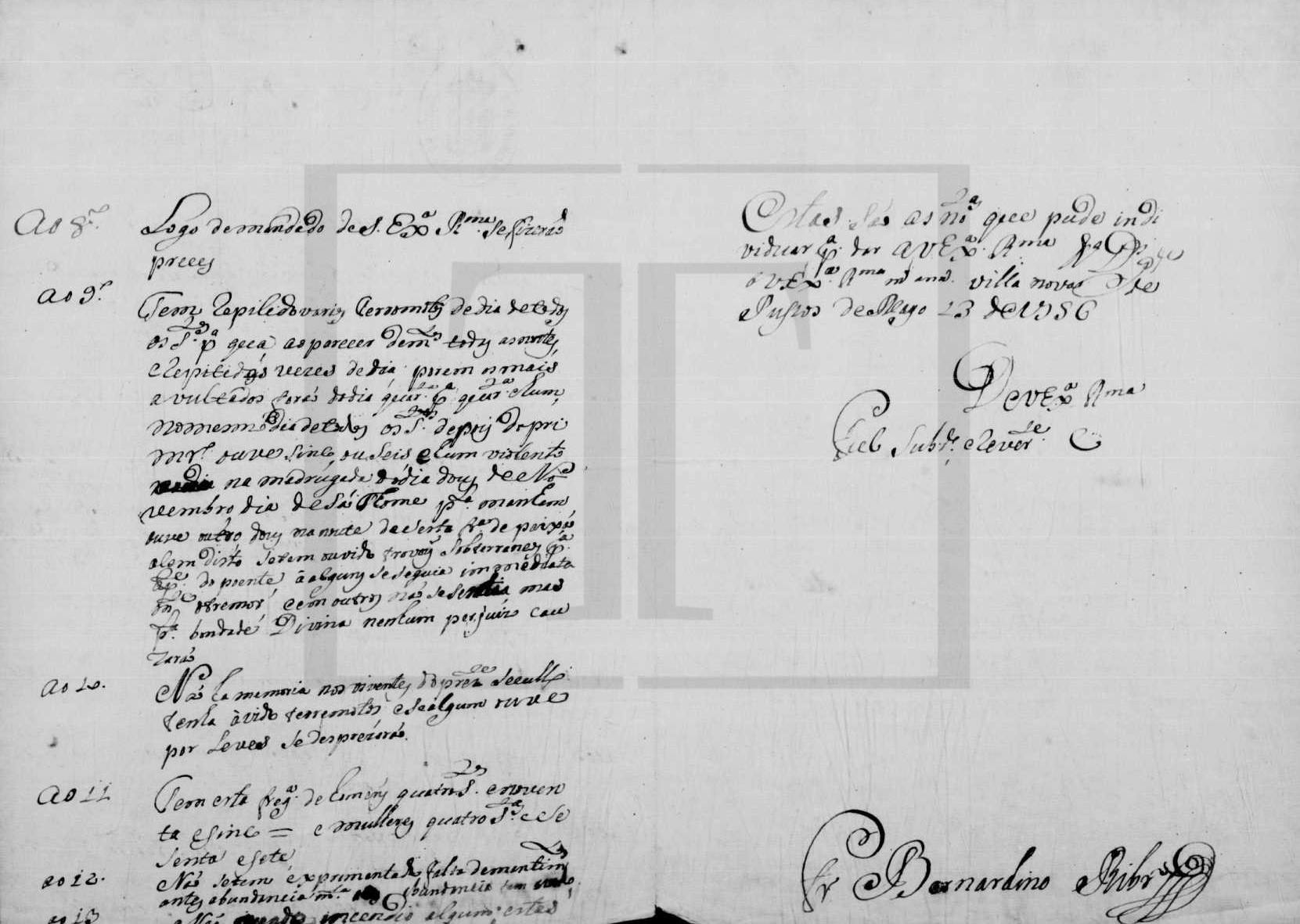
Copy of an original manuscript document of one of the thousands of answers to the Inquiry, kept at the Torre do Tombo, in Lisbon. In this manuscript of a parish in Leiria, we can read the numbered answers, in a total of three pages. For example, to question number 4 - Which people died, if some were distinct? they answer: "No person died in this parish because of the earthquake".
Continue Exploring
http://idl.campus.ciencias.ulisboa.pt/sismologianaescola/
(check the digital resources and the FAQ section - in Portuguese)
Bibliography
José Augusto dos Santos ALVES, «O Marquês de Pombal e a mudança de paradigma», Cultura [Online], Vol. 22, 2006 http://journals.openedition.org/cultura/2222
Inês AMORIM, «“Para lá do medo, temor, susto e pasmo", respostas da Provedoria de Aveiro aos inquéritos de 1756», O Terramoto de 1755, Impactos Históricos, Livros Horizonte, 2007, pp. 61-75
Ana Cristina Bartolomeu de ARAÚJO, «Ruína e sorte em Portugal no século XVIII, A propósito do terramoto de 1755», Revista de História das Ideias. O sagrado e o profano. Homenagem a J. S. da Silva Dias. Vol. 9, Instituto de História e Teoria das Ideias, Universidade de Coimbra, 1987, pp. 327-365.
Luís CARDOSO, Diccionário geográfico, ou noticia historica de todas as cidades, villas, lugares, e aldeas, Rios, Ribeiras, e Serras dos Reynos de Portugal, com todas as cousas raras, que nelles se encontrão, assim antigas, como modernas, Regia Offic. Silviana, 1741-1751.
Charles DAVIDSON, The Founders of Seismology, Arno Press, 1978.
José Sebastião da Silva DIAS, Portugal e a cultura europeia (séculos XVI a XVIII), Separata da Biblos, vol XXVIII, Coimbra Editora, 1953.
MARTINS, Francisco José da Rocha – Lisboa: história das suas glórias e catástrofes. Lisboa: Editorial Inquérito, 1947. vol. 1
MURTEIRA, Helena – Lisboa da Restauração às Luzes, Presença, 1999.
Francisco Luís Pereira de SOUSA, Ideia geral dos effeitos do megasismo de 1755 em Portugal, Typ. do Commercio, 1914.
Francisco Luís Pereira de SOUSA, O terremoto do 1º de Novembro de 1755 e um estudo demografico, 4 vols., Serviços Geológicos, Tip. do Comércio, 1919-1932.
1755, O Grande Terramoto de Lisboa, FLAD, Público, 2005.
Show other RFID points
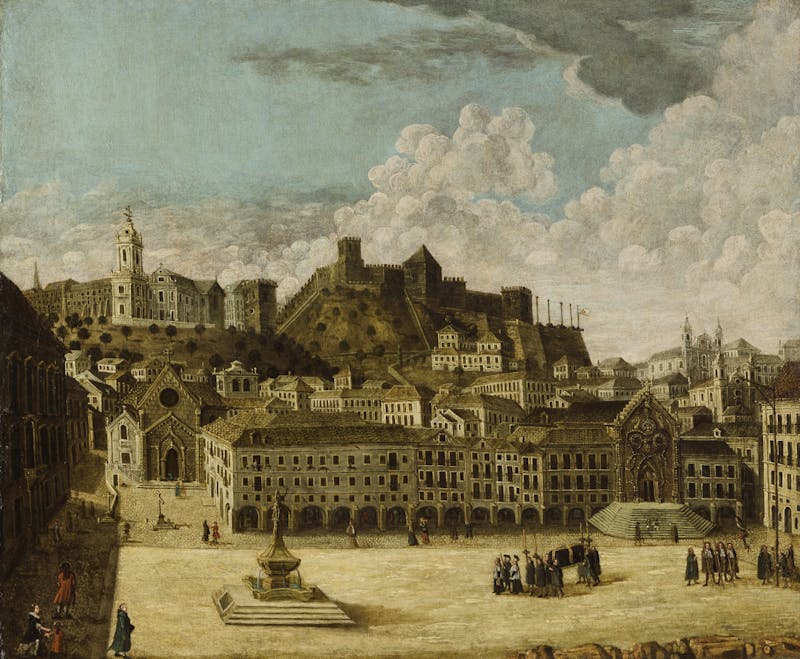
Lisbon 1755 - A city of contrasts
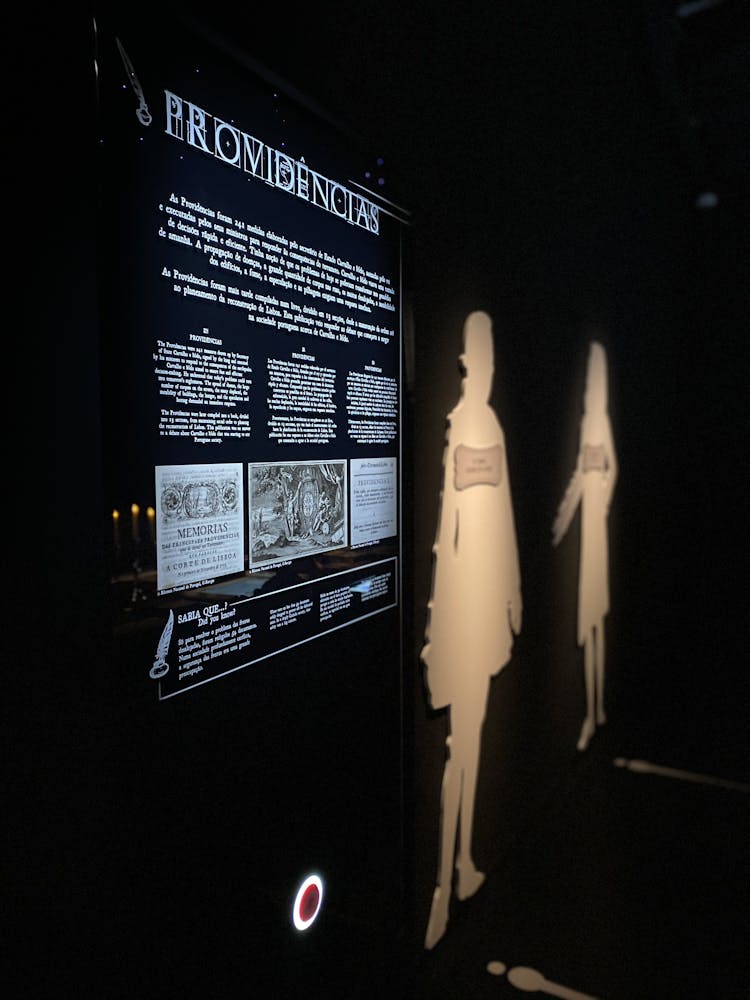
Providências

The German merchant
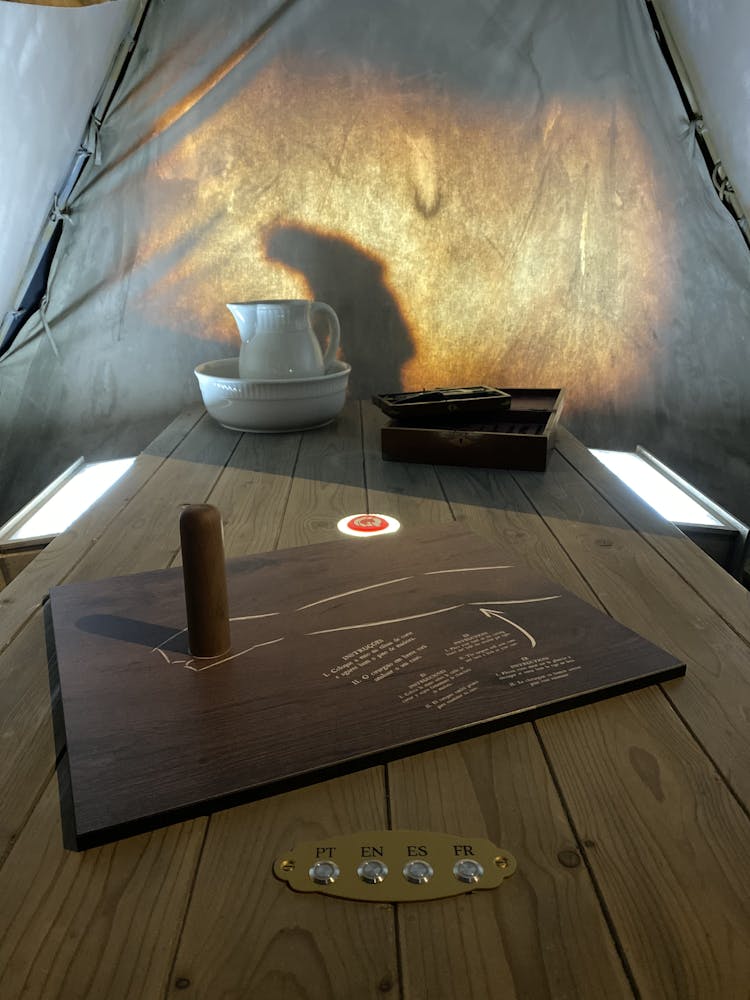
Surgeon Bleeding Barber
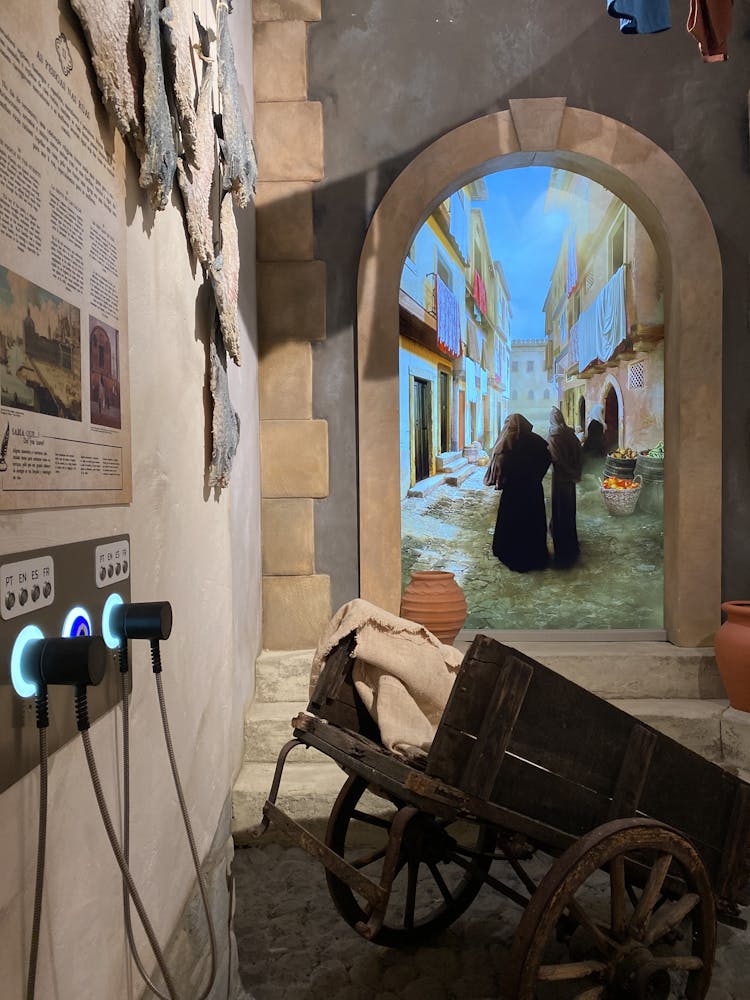
The people in the streets
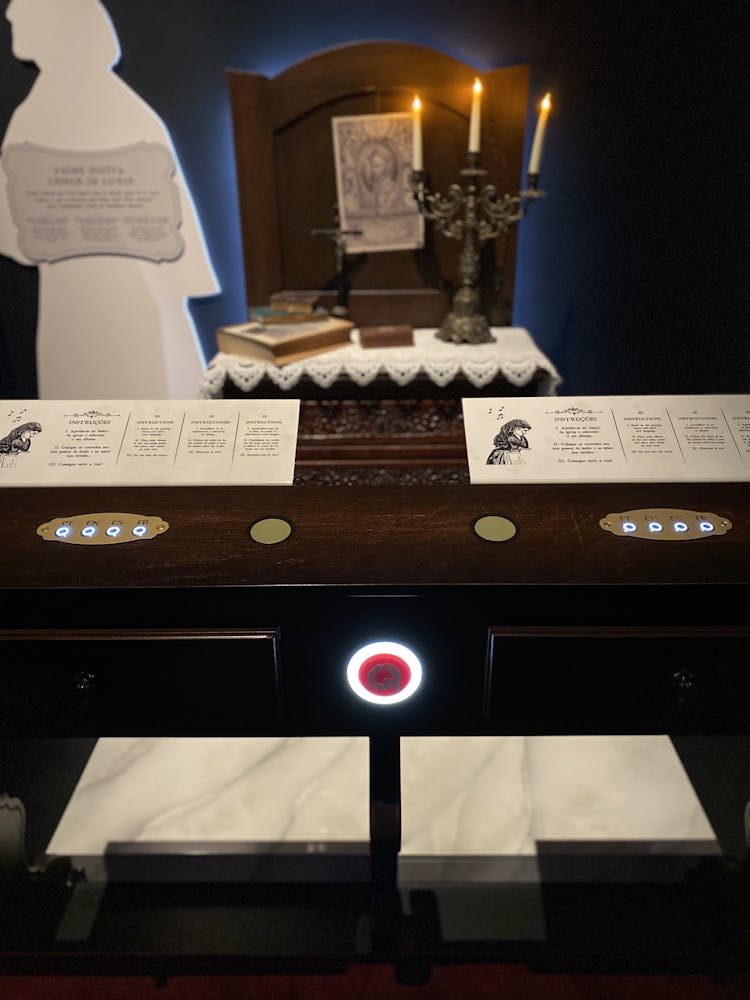
Jesuit book censor Priest
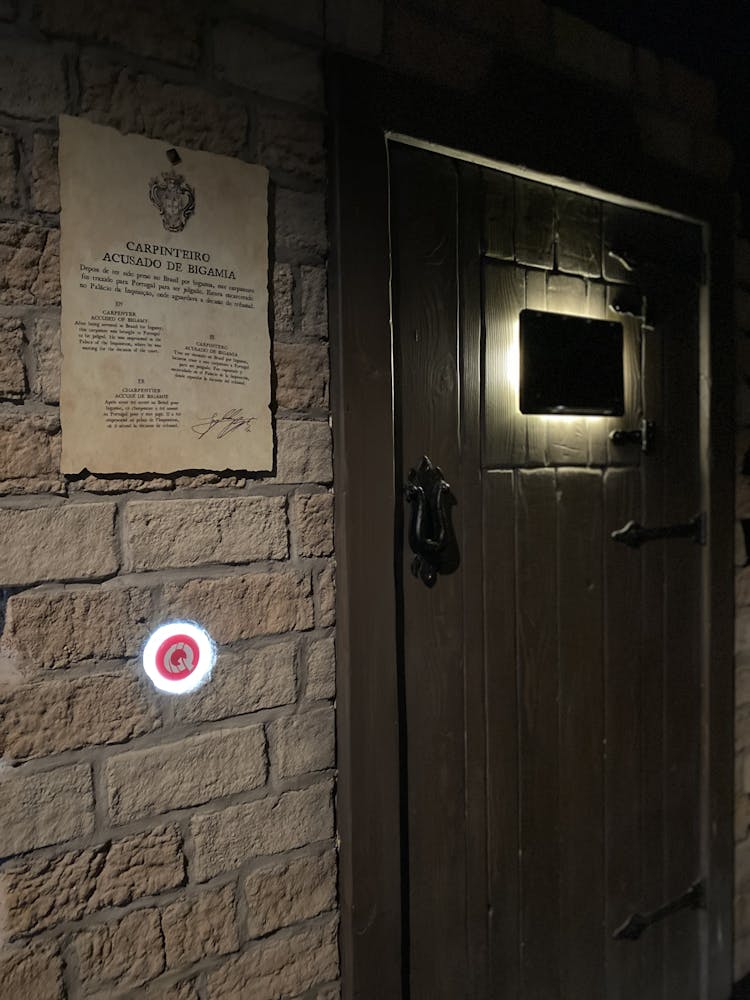
Carpenter accused of bigamy
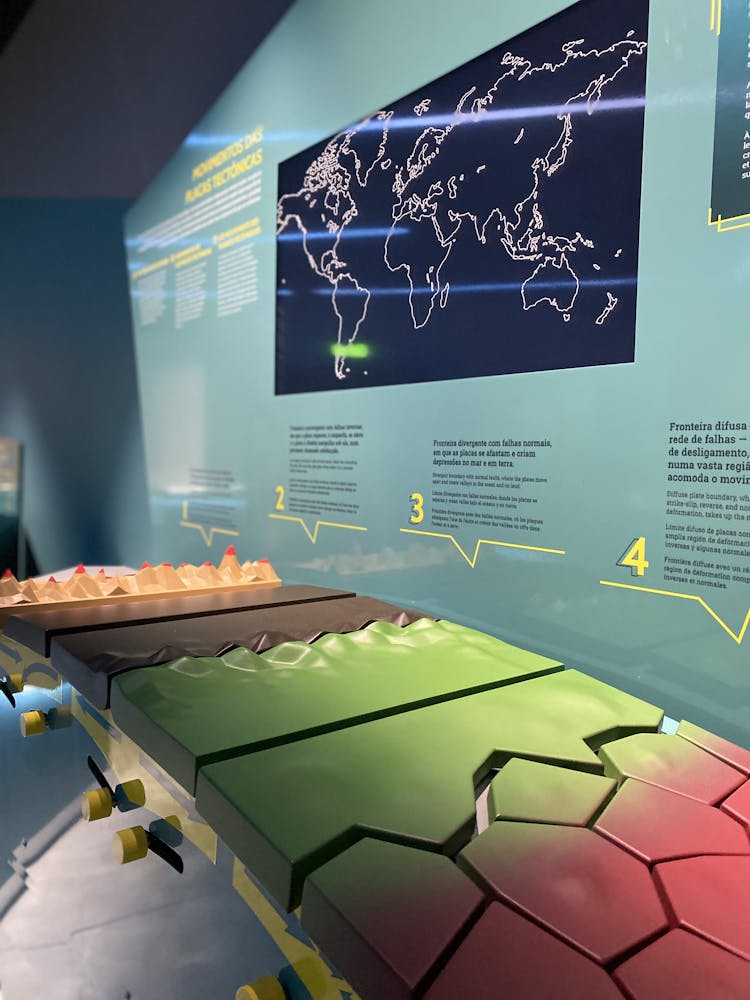
Tectonic Plates and Moving Plates
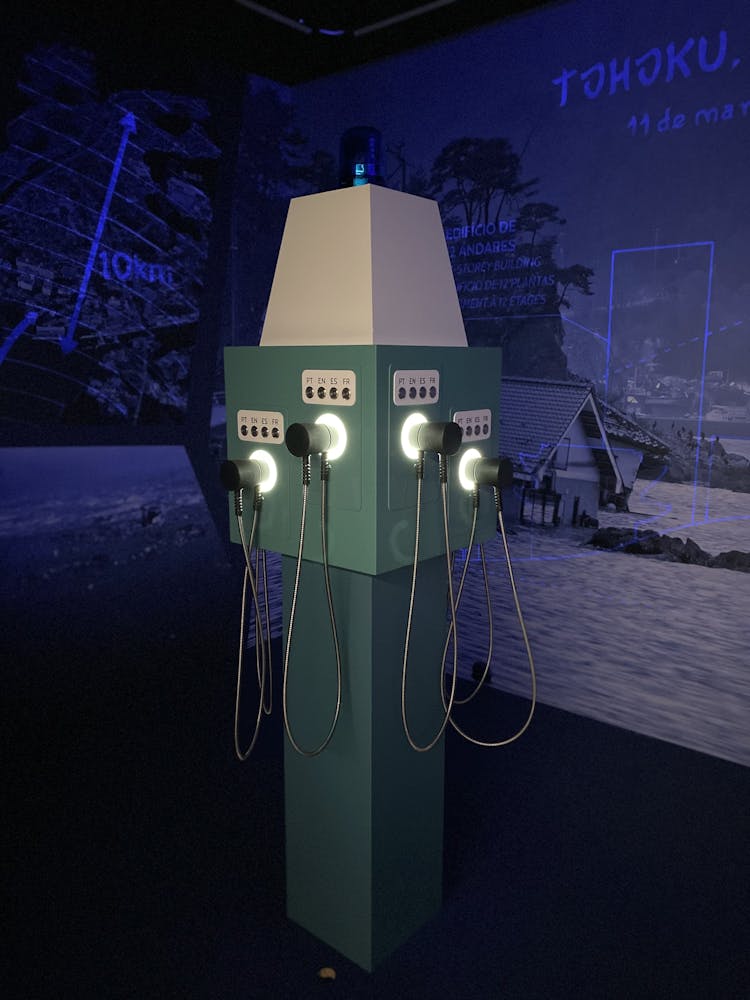
San Francisco and Tohoku
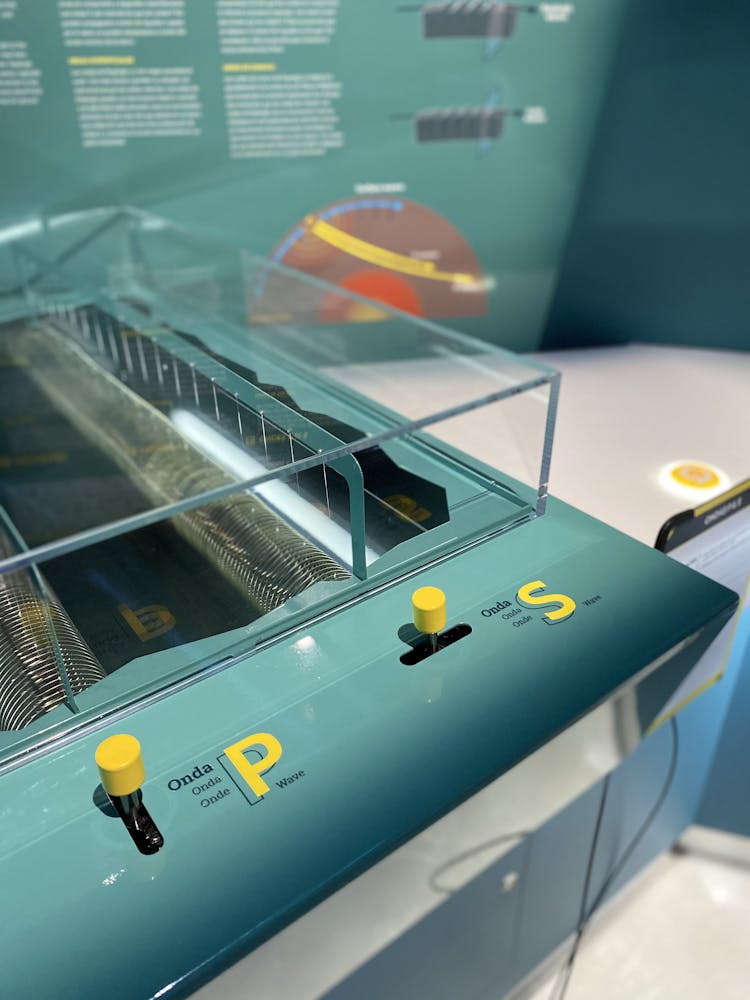
P&S Waves
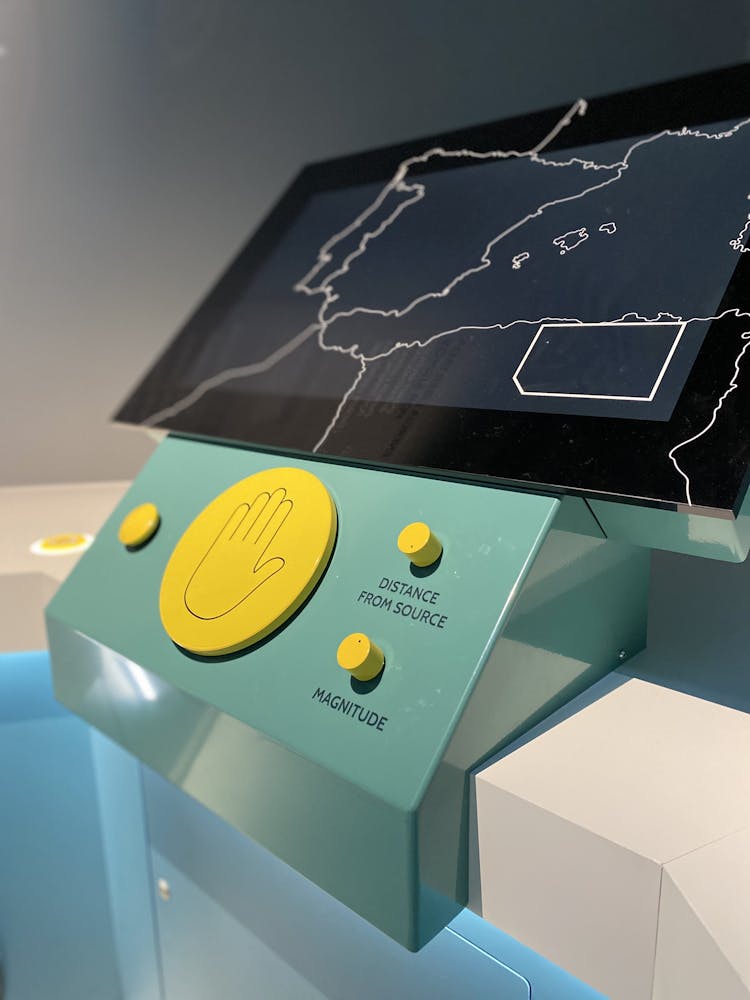
The Size of an Earthquake
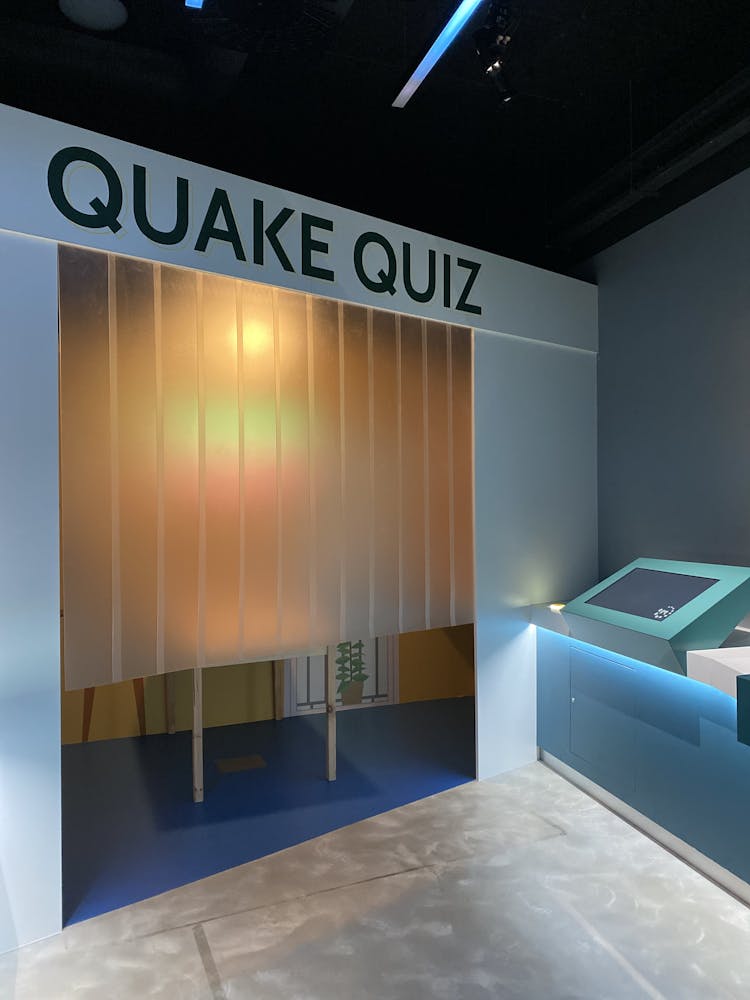
Are we prepared for the next one?
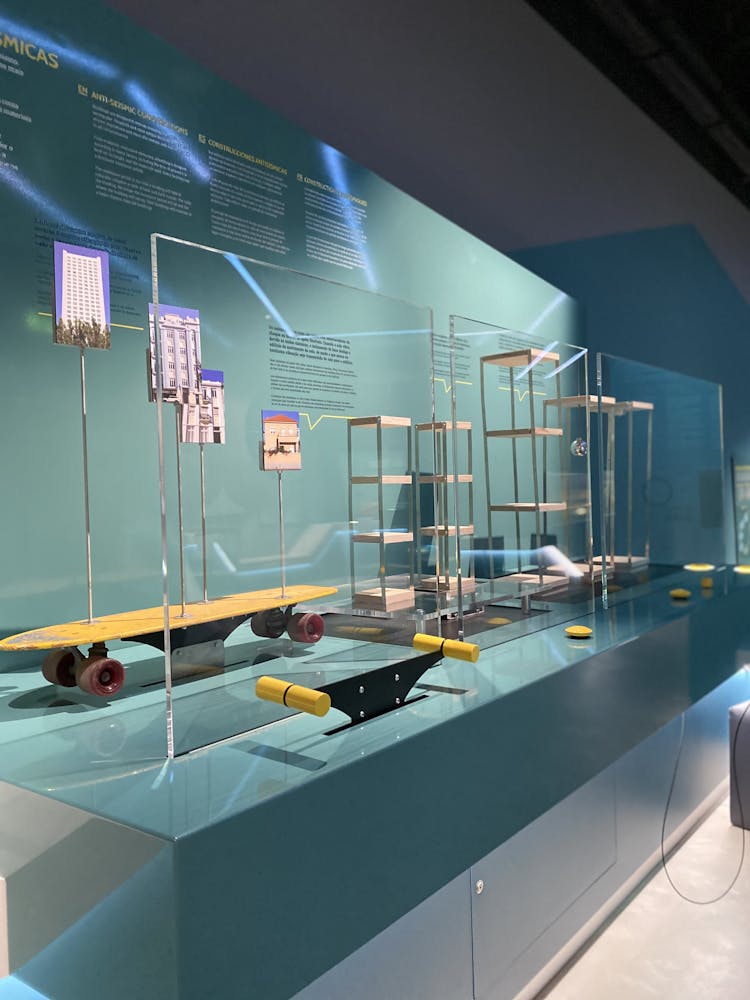
Anti Seismic Constructions
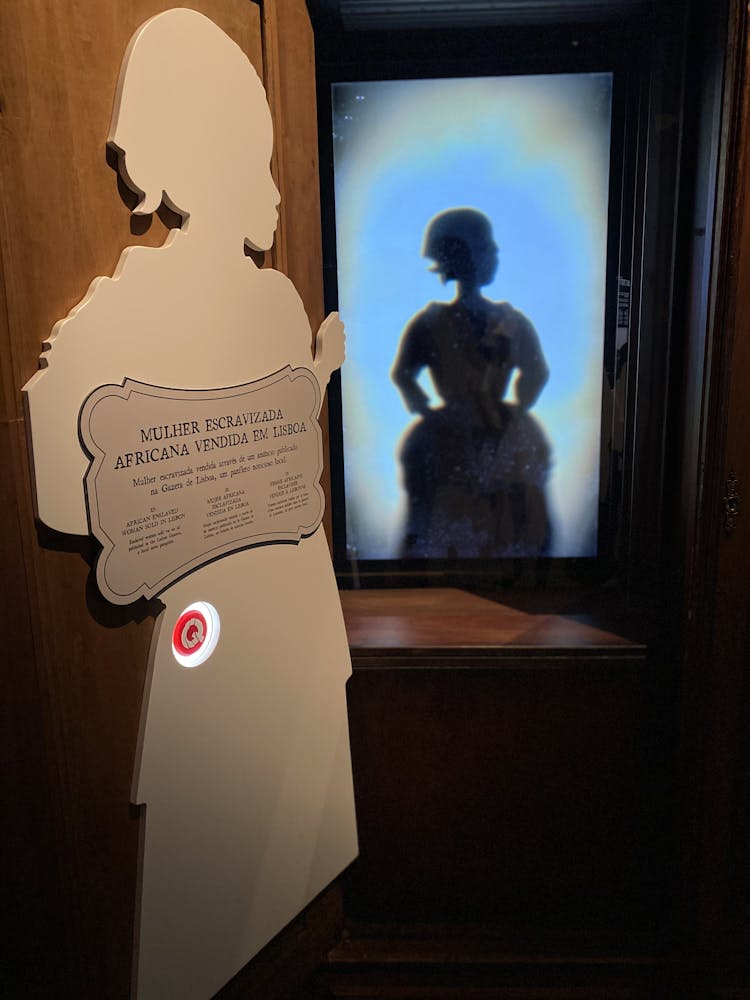
African enslaved woman bought in Lisbon
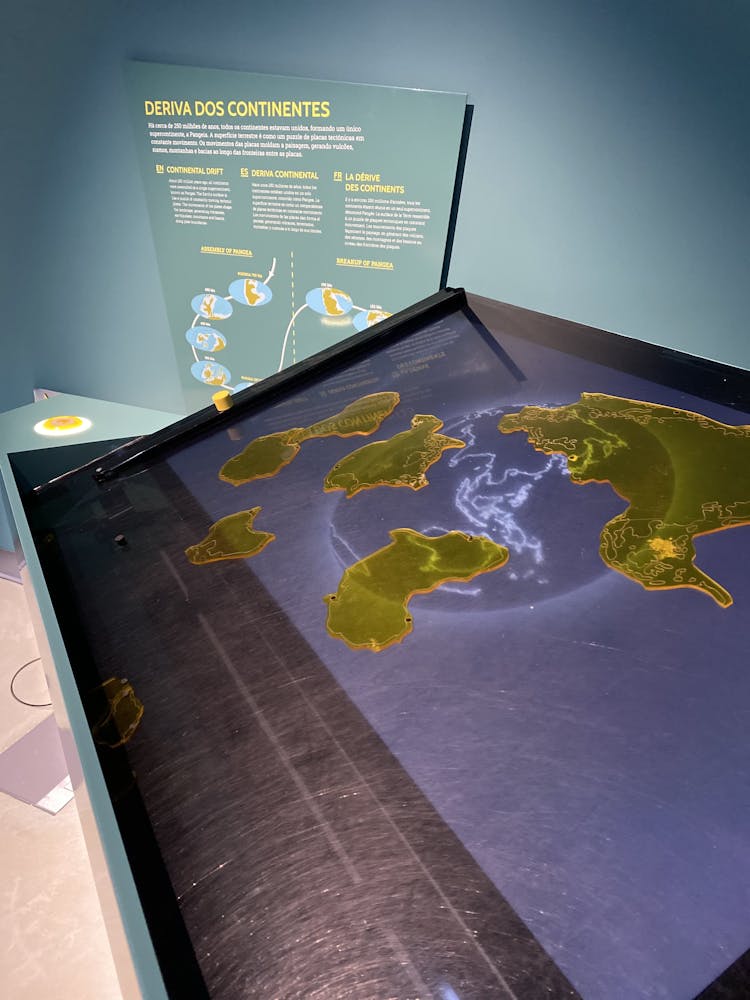
Continental Drift
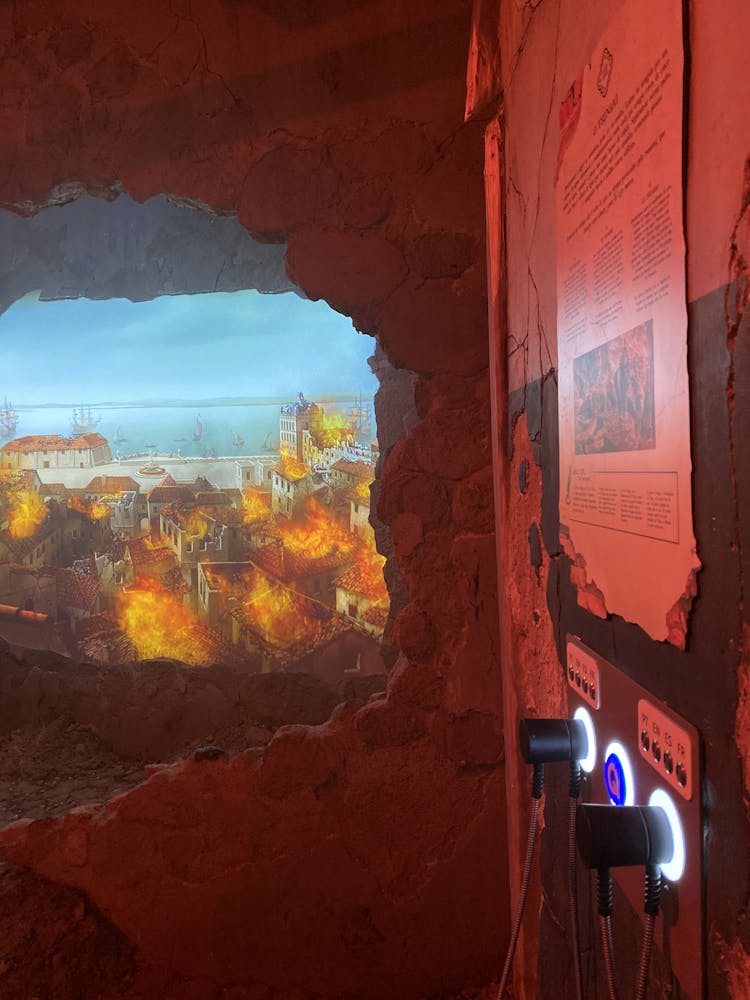
The Tsunami

Seismometer
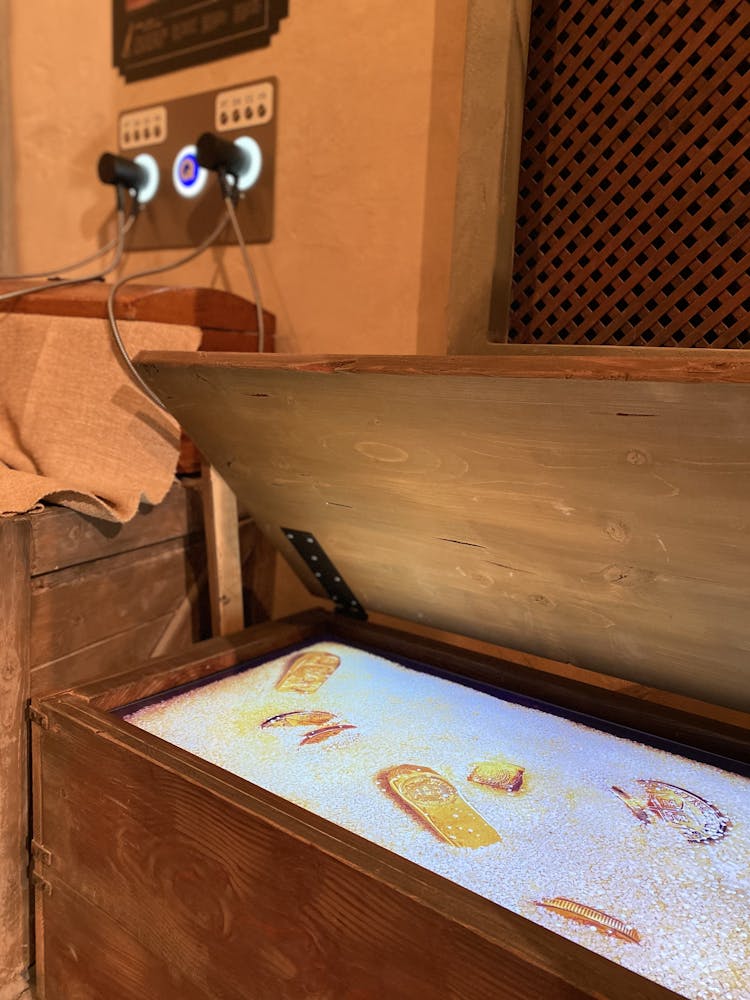
Richness of the city and gold smuggling
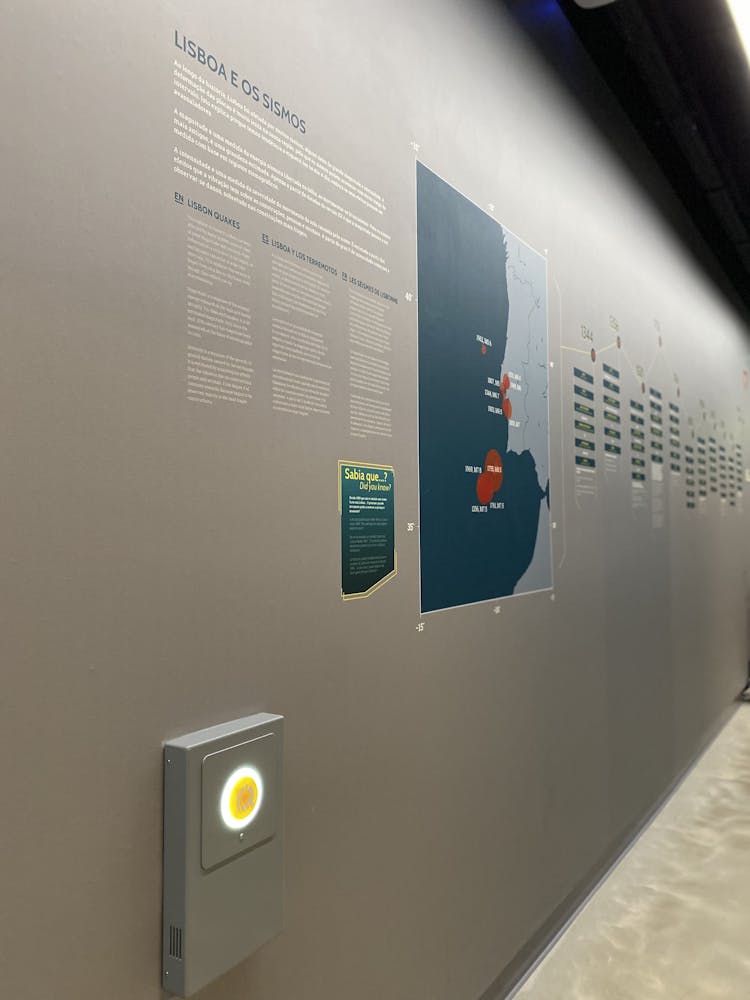
Portugal Tectonics and Lisbon Quakes

How the fires started and propagated
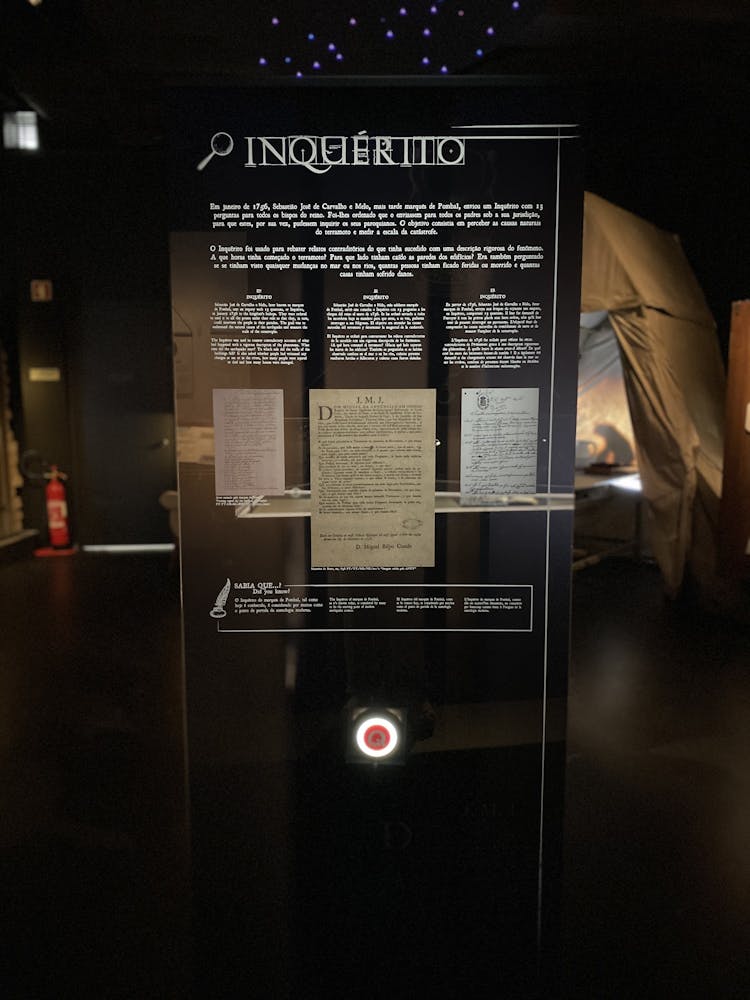
Inquérito
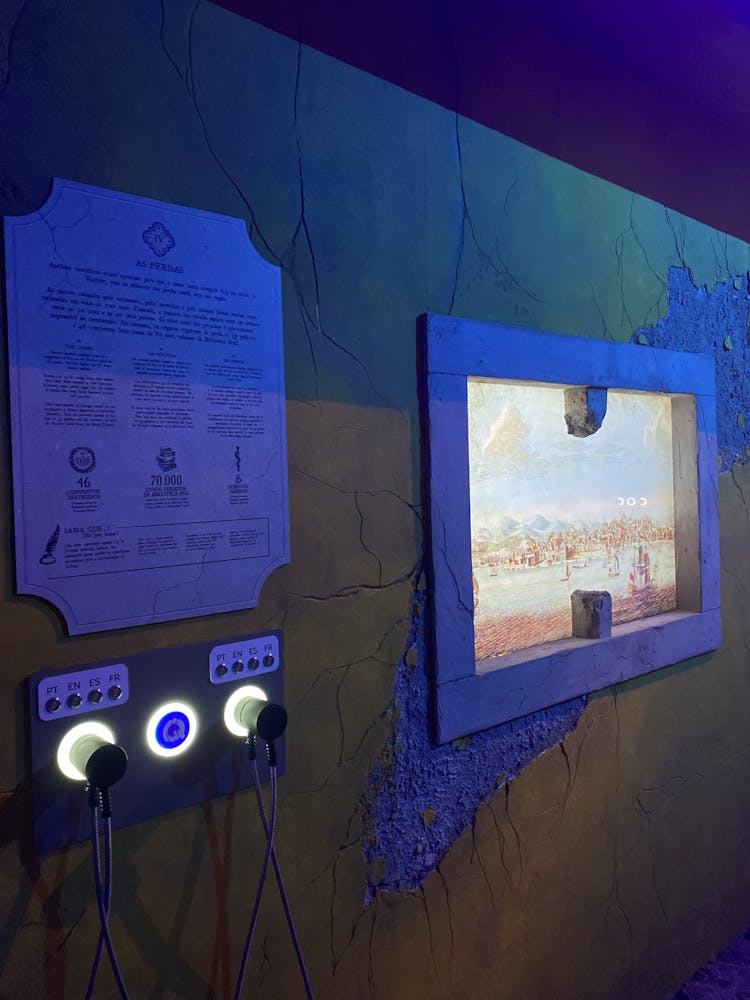
The losses
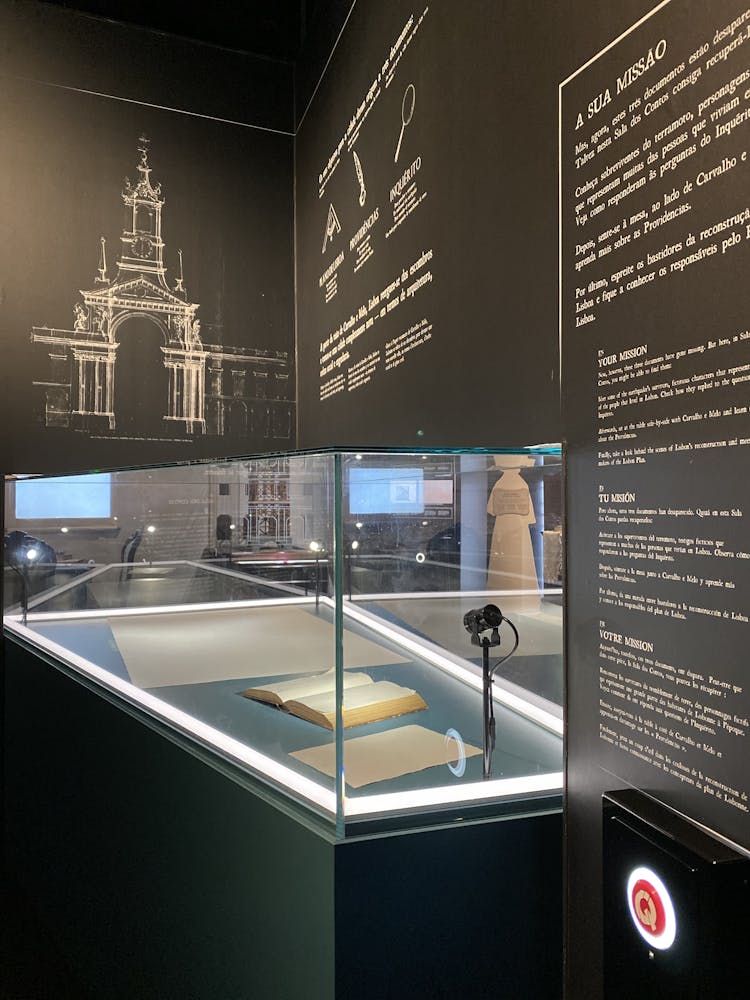
The three missing documents
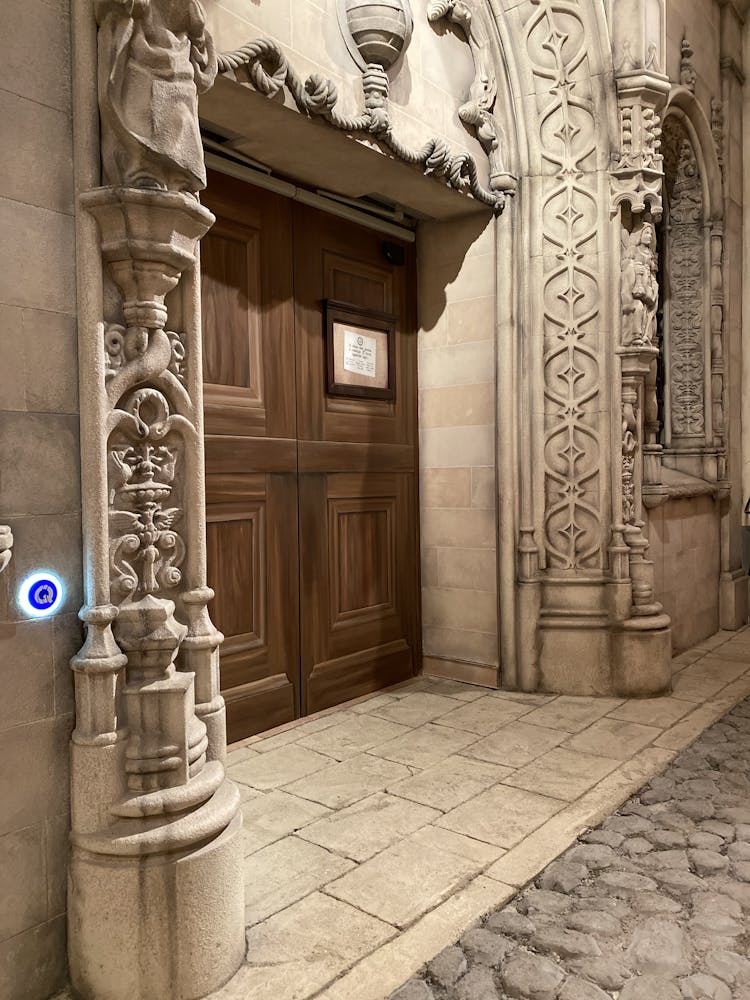
Traditional Rite Masses
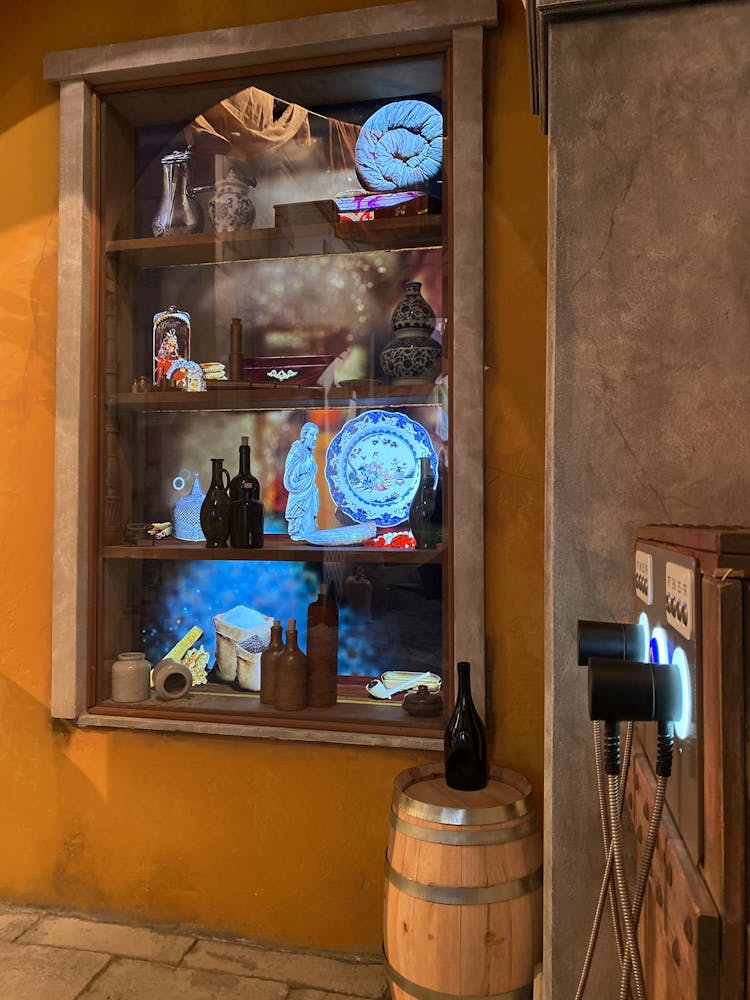
The connection with the colonized territories
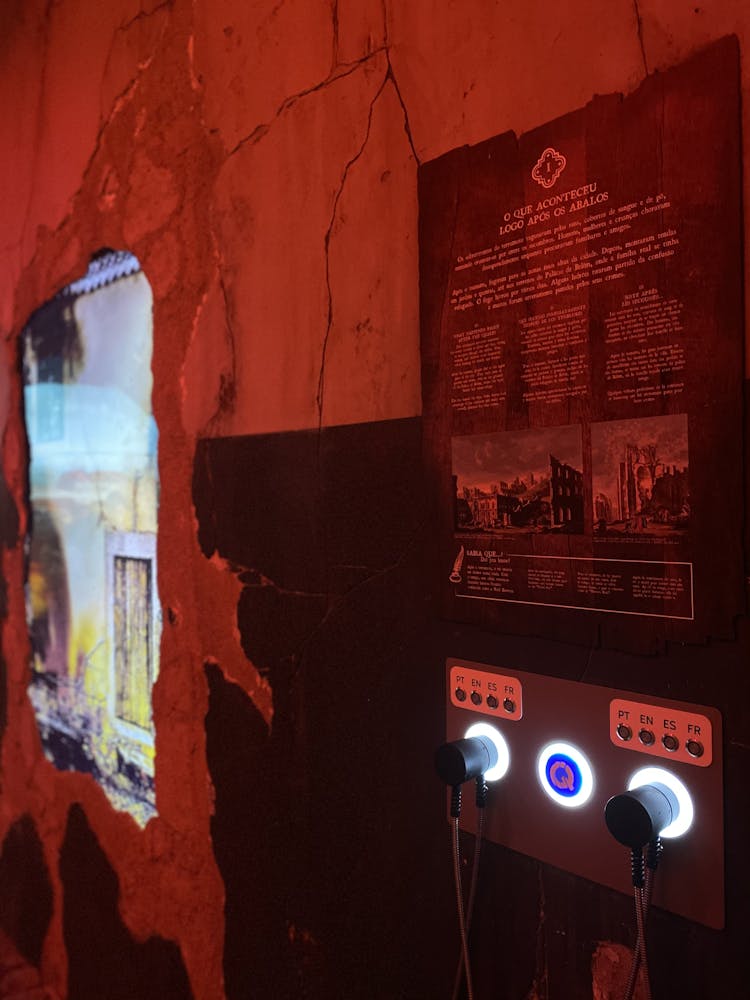
What happened right after the quakes
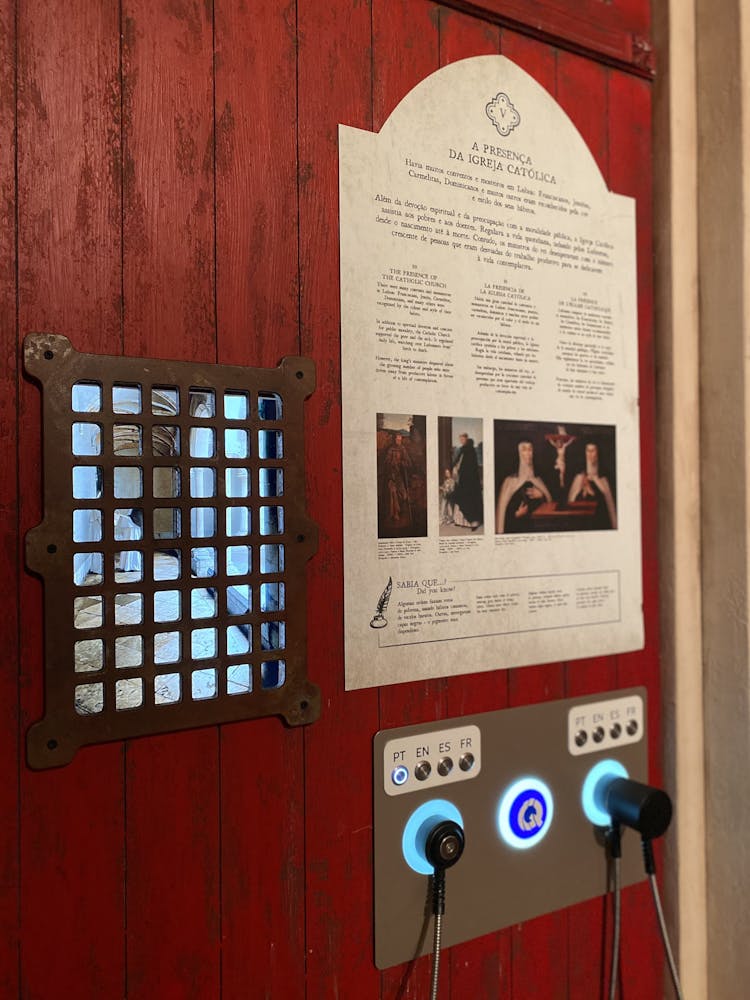
Presence of the Catholic Church
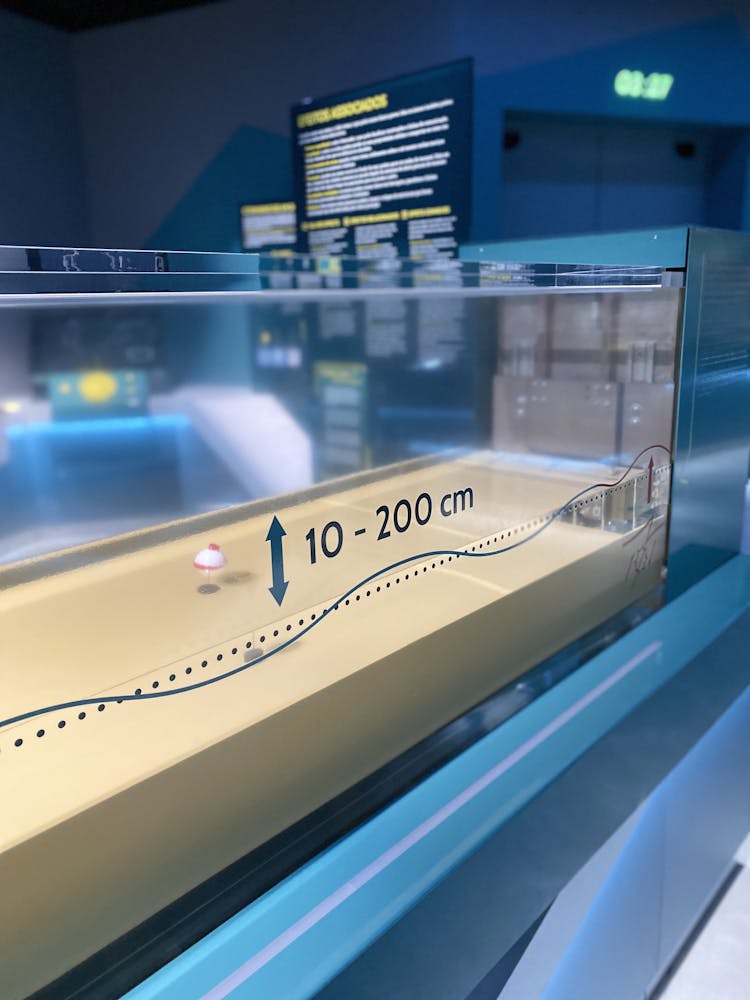
Related Effects

The King's Ministers
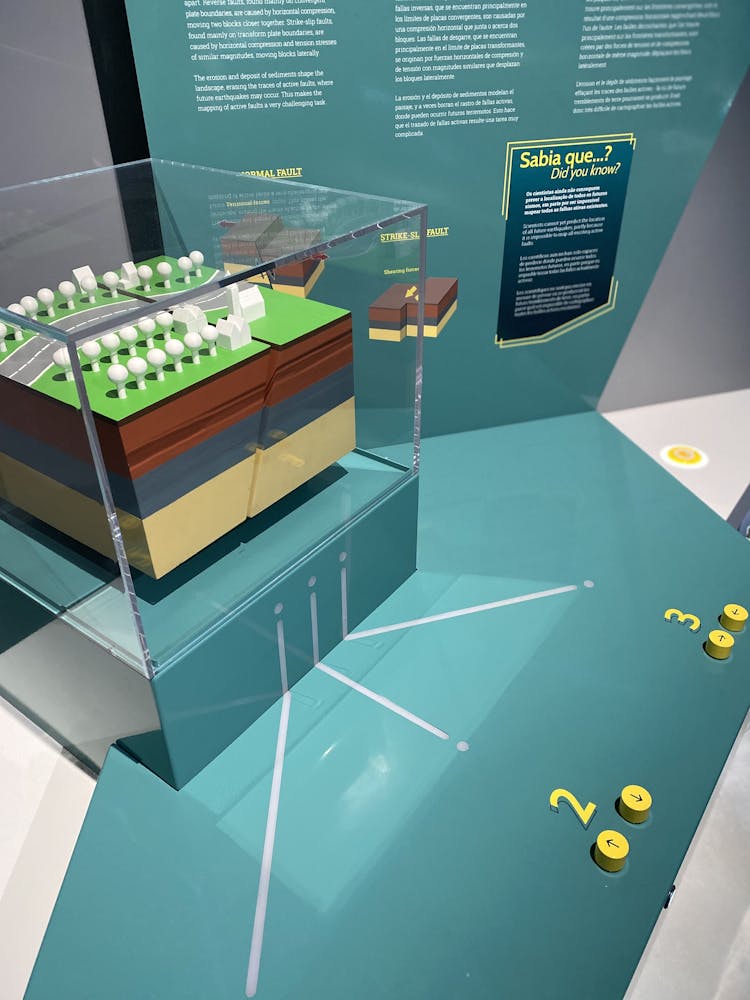
Earthquakes and Faults
